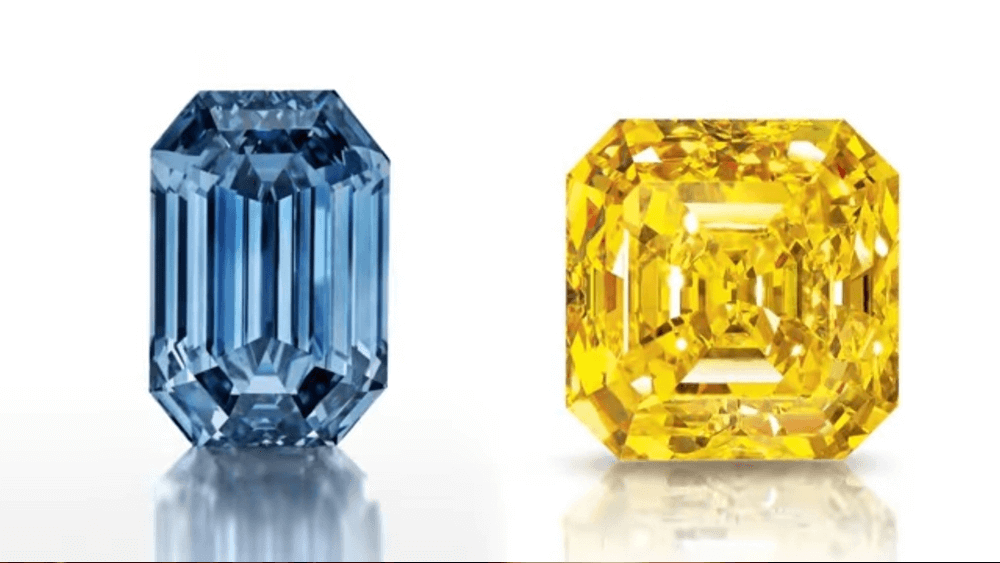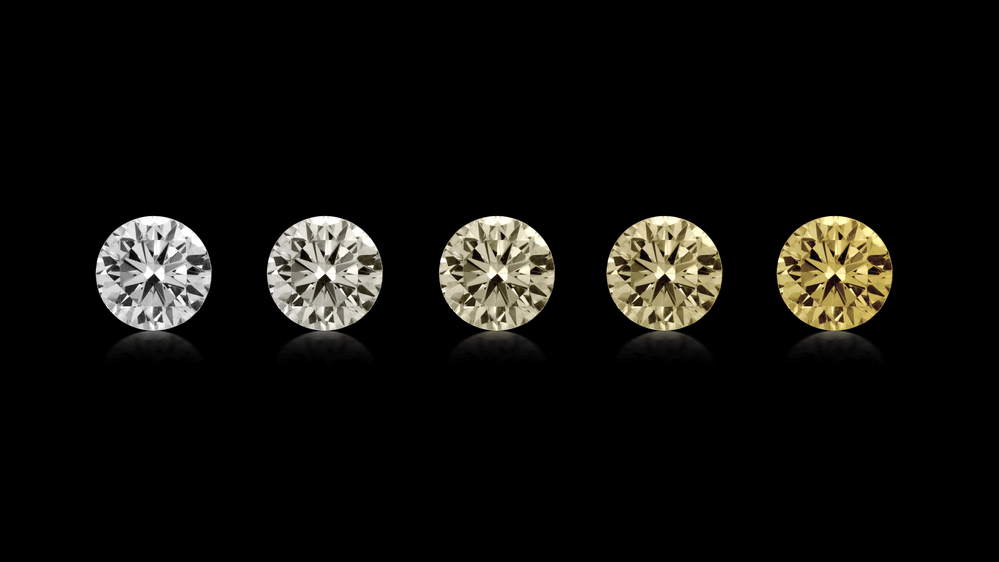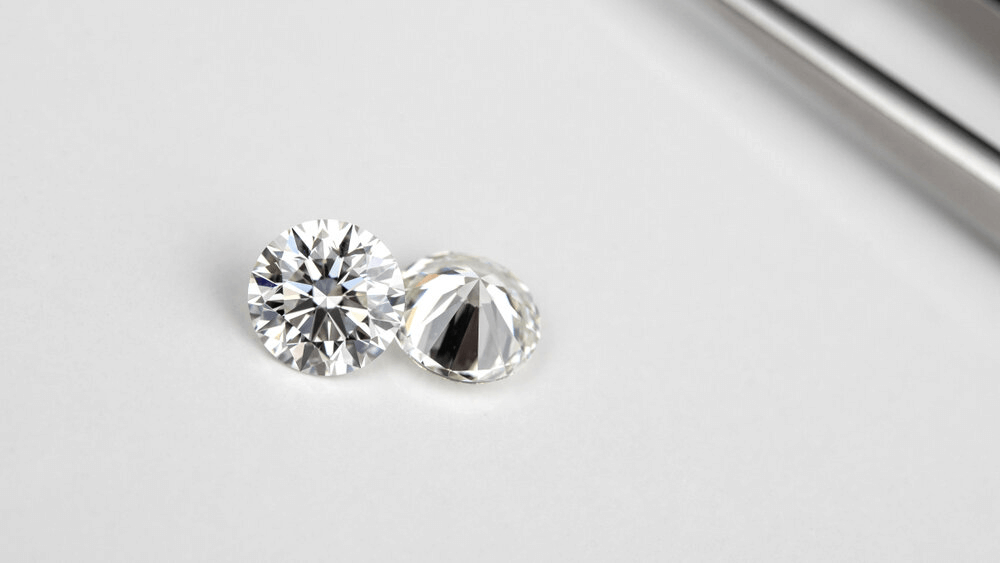Are J Color Diamonds Best Bang For Your Buck?

By Gary A.

Edited by Olivia H.
Published Sep 10, 2021
Edited on Dec 17, 2024
For those looking for the perfect balance between beauty and value, a J Color Diamond offers just the right mix—could it be the ideal choice for your engagement ring?

- 7 Quick Tips for Choosing a J Color Diamond Engagement Ring
- Introduction
- The Basics of Diamond Color J
- Comparing J Color with Higher Grades
- The Role of Shape in Enhancing Beauty
- Value and Pricing Analysis
- The Smart Choice for Budget-Conscious Buyers- Choosing the Right J Color Diamond
- Our Expert Take
- 7 FAQs
Before we dive deeper into the specifics, here are some practical tips to help guide your decision-making process:
7 Quick Tips for Choosing a J Color Diamond Engagement Ring
When selecting a J color diamond for an engagement ring, certain considerations can greatly impact your satisfaction with the final piece. Here are practical tips to guide you through the process:
- Tip 1: Prioritize the Cut Quality: The cut of a J color diamond plays a pivotal role in its appearance. Opt for a high-quality cut, as it can enhance the diamond’s brilliance and make the color less noticeable. Brilliant cuts, like round or princess cuts, are particularly effective in maximizing sparkle and minimizing color perception.
- Tip 2: Examine the Diamond in Different Lighting Conditions: Inspect the diamond under various lighting conditions to understand how its color appears. Natural daylight can reveal the true color of the diamond more accurately than artificial lighting. Observe the diamond from different angles to get a comprehensive view of its color and clarity.
- Tip 3: Consider the Metal Color for the Setting: The choice of metal for the ring setting can influence how the diamond’s color is perceived. Yellow gold or rose gold settings can complement the warm tones of a J color diamond, making it appear whiter. Platinum or white gold settings can contrast with the diamond’s color, so be mindful if choosing a J color diamond with these metals.
- Tip 4: Understand the Size Impact: The size of the diamond can affect how noticeable the color is. Larger J color diamonds may exhibit more noticeable color, so it’s important to balance size with color preferences. For larger diamonds, consider a slightly higher color grade if color is a significant concern.
- Tip 5: Evaluate the Diamond Shape: Different shapes can accentuate or hide the color in a J color diamond. Shapes with more facets, like round or oval cuts, can help disguise the color. Stepped cuts like emerald or Asscher may make the color more apparent and are better suited for higher color grades.
- Tip 6: Consider the Impact of Fluorescence: Fluorescence can sometimes improve the appearance of J color diamonds by making them look whiter. Look for diamonds with faint to medium blue fluorescence, as this can help counteract the yellow tint. However, avoid strong fluorescence as it can sometimes give the diamond a hazy or oily appearance.
- Tip 7: Compare Side by Side with Other Grades: If possible, compare J color diamonds side by side with diamonds of higher color grades. This comparison can help you understand the subtle differences and decide if the lower color grade meets your expectations.Comparing diamonds should be on a folded white paper, while the diamonds are placed on the table that the view is from the side. Remember, personal preference plays a significant role in what is considered acceptable in terms of diamond color.
Now that you’ve got these practical tips, use Jeweler AI below to find the perfect engagement ring that suits your style and budget:
Introduction
Color can be a tricky subject for diamond shoppers. First of all, you’ve got to get your head around the idea that most clear diamonds technically aren’t clear – then, you’ve got to get used to the idea that, in all likelihood, yours won’t be, either.
The great news is that, even if a skilled diamond grader has been able to identify a definitive tint to your diamond, it’s pretty likely that you won’t notice it yourself. There’s a long spectrum between the clearest diamonds in the world and the ones that are suffering from a deal-breaking and undeniable yellow cast – and that’s why you probably can’t remember the last time a friend, co-worker, or sister flashed a noticeably yellow diamond your way. It’s easy enough to avoid, provided you know what you’re looking for.
This is why so many shoppers end up looking at the J color grade. While nowhere near the very top of the scale, it seems to fall in that comfortable stretch – the ‘sweet spot’ we talk about for anyone looking to purchase a diamond within their budget.
The Basics of Diamond Color J
Whether you already know a little about the GIA Color Scale, or are just now finding out for the first time that ‘color’ is something you need to be thinking about, here are the basics of J diamonds.
A J Color Diamond is one that has been recorded as part of the ‘Near Colorless’ group of diamonds, six grades from the top of the scale.
The GIA Color Scale runs through D-Z and is divided into a number of subcategories ranging from Colorless (D-F), Near Colorless (G-J), Faint (K-M), Very Light (N-R) and Light (S-Z). It is used to identify the presence of a yellow or brown tint in otherwise clear diamonds – something which is incredibly common, due to the presence of trace amounts of nitrogen, which interact with light in a unique way to create a yellowish hue.
A very, very small amount of nitrogen will have no discernible impact on the diamond, while a larger amount can give some diamonds a deep, yellow coloration. In some diamonds, this yellow hue will go beyond the D-Z color scale. They will be known as ‘fancy color’ diamonds and graded differently.
Clear diamonds, however, remain the most popular choice among casual shoppers. As you’ve no doubt guessed, any visible yellow tint is avoided in clear diamonds and is considered a sign of a poorer quality diamond.
Is J Color Noticeable?
Yes and no. If you’re scrutinizing the diamond from all angles in search of a hint of yellow, then you’ll probably notice it. If, however, it is set within a beautiful ring and being admired by your future bride’s friends and family, it’s very unlikely they’ll spot it.
The answer depends on what you consider to be noticeable. Yes, many J color diamonds carry a very faint, just-discernible yellow tint, which will be more obvious from the side rather than the diamond’s table (upper surface), and largely concealed by the ring setting.
The Allure of J Color Diamonds
J diamonds are very popular since their coloration lowers their value without making a significant impact on their beauty. All of the most coveted aspects of a diamond’s appearance – its luster, sparkle, and transparency – will all be intact, provided you make a wise choice with regard to cut and clarity.
Cut is, of course, the most important factor to consider when it comes to maximizing sparkle, so don’t let these excellent color grades deter you based on light performance alone. Even a diamond much further down the color scale will still sparkle.
Comparing J Color with Higher Grades
H color and J color diamonds exist in the same subcategory of ‘Near Colorless’ diamonds, and it takes the discerning, well-trained eye of an expert diamond grader or jeweler to really notice any significant difference between the two.
If we got you to take a look at this 1.8 Carat H-VS2 Round Diamond under the exact same lighting conditions as this 1.81 Carat J-VS2 Round Diamond, then the chances are that you wouldn’t be able to spot any significant difference between them. Perhaps the slightest tint in the J diamond, but one that won’t interfere with the beauty of your diamond ring once it’s complete.
Remember that H Diamonds afford a higher price on the market since they are the highest color grade in the ‘Near Colorless’ subcategory. Yes, they are cheaper than D, E and F Color diamonds for that same reason, but that drop in price is reflected once again in the drop from an H to a J Diamond.
So, while H is an objectively clearer color grade than J, there is no need to presume that picking the more affordable J color means that you’re picking something inferior. It can still be an excellent choice for many shoppers.
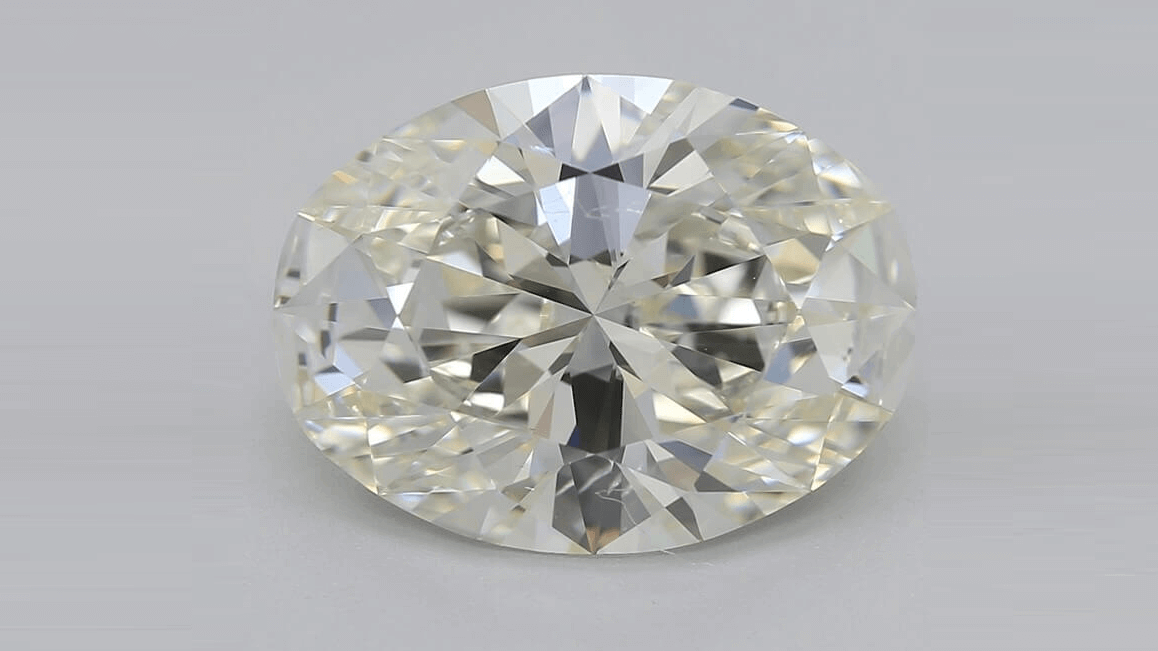
The Role of Shape in Enhancing Beauty
Also, if you are still worried about any yellow tint showing up in your diamond, then it is worth keeping in mind that some diamond shapes are much better at masking slight discoloration than others. The longer facets and ‘hall of mirrors’ style internal structure of the Emerald cut can mean that any slight color is laid bare more than it is in brilliant and fancy cuts.
The Round Brilliant is ideal for disguising a slight hint of color. Then again, this is the most expensive shape, so consider whether it’s worth investing in a higher color grade for the shape you want, or a Round Brilliant than lets you save money on the color grade.
Setting Styles for J Color Diamonds
The same thing goes for picking a complementary setting. In diamonds with a faint color, the bright white appearance of white gold or platinum can actually highlight any vague yellow tint in the center stone, and make it seem more obvious than it is. In this instance, the warm hues of yellow or rose gold can complement a J Diamond.
As we mentioned above, a very slight yellow tint can be more visible when viewing the diamond from the side, rather than from the top down. Fortunately, in engagement rings, it is far more common for the diamond to be viewed through the table (the flat part at the top of the diamond).
Fluorescence: A Hidden Benefit?
In some cases, mild fluorescence can effectively ‘cancel out’ a mild, yellow hue and give the impression of a clearer diamond.
However, you would probably have a much easier time focusing your search on finding a beautiful, eye clean diamond from the Near Colorless grades, since there are plenty with no obvious tint to them. Diamond fluorescence is always better kept to a minimum, so finding a diamond that is perfectly complemented by its own fluorescence is not as easy as widening your search to include any diamond with a very mild color.
Value and Pricing Analysis
Obviously, the main reason any shopper starts to look a little deeper into the world of J diamonds is because of price. Making a wise investment is all about striking the balance between eye cleanliness, and affordability, so how do J diamonds fit into that picture?
Price Advantage and Budget Considerations
Provided the two diamonds in question are comparable in terms of cut, clarity, and carat weight, then it is fair to say that G diamonds will come out significantly more expensive.
G Color Diamonds represent the very top grade in the Near Colorless subcategory, putting them just shy of the highly coveted group of diamonds spanning the D-F grades. So, while they’re in the same category as J diamonds, they fetch a premium price among buyers for their proximity to those highest grades.
And, naturally, any grade that falls above another will fetch a higher value – provided the two diamonds in question are otherwise comparable.
This is one reason why J color diamonds are a pretty popular choice among buyers – they are the most affordable way of remaining within the near colorless category. Of course, purchasing from the ‘Near Colorless’ category does mean that you will always have to pay a premium, but J diamonds represent the most economical way of purchasing a diamond that does not show too much color.
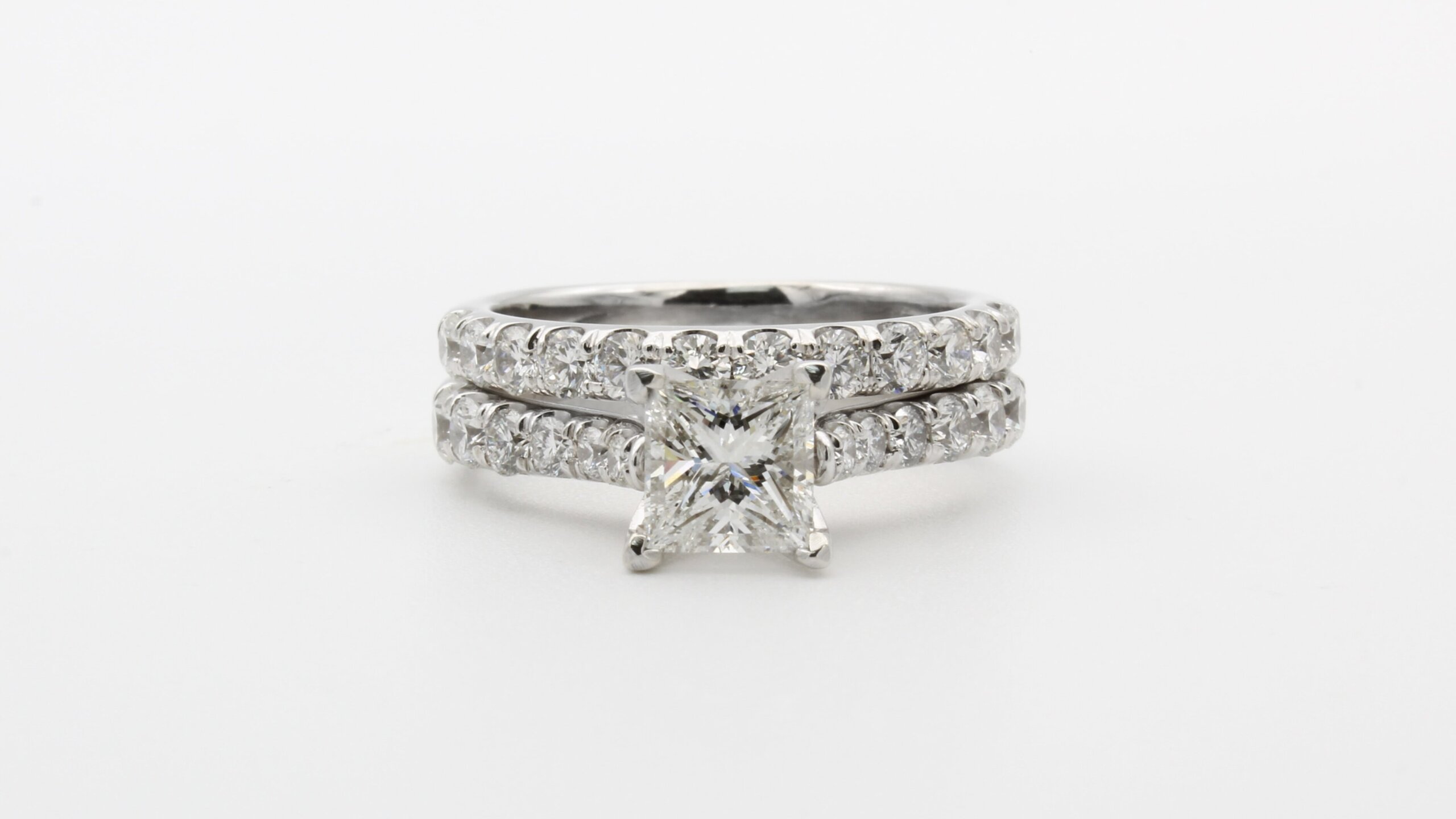
The Smart Choice for Budget-Conscious Buyers- Choosing the Right J Color Diamond
J diamonds can represent the perfect choice for many shoppers, but keep in mind that not all diamonds – even those that have been given the same color grade – will look exactly the same.
Consider the fact that some (typically smaller) SI2 diamonds can appear eye clean, while others will be visibly included. Provided they’re happy with the size, then an eye clean SI2 diamond can be a great choice for someone on a tighter budget. If, on the other hand, that same person knows that they will be unhappy with a below average diamond in terms of carat weight, then the SI2 diamond is unlikely to be worth the price.
The same holds for J diamonds – particularly if you’re looking to ‘go big or go home’ with your diamond since, as we’ve mentioned, larger diamonds are not so good at concealing discoloration.
Also, consider the ring itself. This Emerald Cut Cathedral Engagement Ring in Platinum leaves much of the diamond exposed – and, in particular, that pesky side view that can so easily betray a slightly yellow diamond. Not to mention it’s a step cut. If this ring were to be paired with a J color diamond –rather than, say, a G diamond – then there is a strong possibility your eyes will pick up on a slightly yellow tint.
Alternatively, take a look at this Pear Halo Engagement Ring in Yellow Gold. Some jewelers recommend encircling slightly off-color diamonds within a halo of accent diamonds featuring a slightly lower color grade, so as to boost the contrast and make the center diamond appear whiter. Similarly, a yellow gold setting can make a yellow tint appear as a reflection of the ring, rather than an innate discoloration.
We’re not saying you should dip way down the Color Scale and trust that the right ring setting will correct discoloration, but that, with very faint yellowing, there are ways of complementing the diamond better.
Our Expert Take
Not only is the J color grade the most affordable option among shoppers looking to find a beautiful center stone for an engagement ring but, for that reason, it is also one of the most popular choices boasting plenty of worthwhile options to pick from.
It’s not necessary for you to squeeze every last penny out of your budget in order to move up a couple of grades – not least of all because of the fact that, if you do that, you’ll likely run out of money to invest into other aspects of the diamond, such as carat weight or clarity.
The most important thing to keep in mind is how the diamond’s shape and size will influence the appearance of color in your diamond. A 0.5 carat J color diamond will look a little different to a 3 carat J color diamond of the same shape, for instance, just as a Pear cut diamond may hide a slightly yellow hue much better than an Emerald cut diamond of the same size.
In other words, we can’t tell you that all J color diamonds will look equally beautiful in an engagement ring, and there will be some that aren’t worth your money.
7 FAQs
- Q: What is a J Color Diamond?
- A: A J Color Diamond is classified under the ‘Near Colorless’ category, displaying a subtle yellow hue while appearing mostly colorless.
- Q: Is J Color Diamond Too Yellow for an Engagement Ring?
- A: No, for most settings and styles, the yellow tint in J color diamonds is barely noticeable and can complement the ring design beautifully.
- Q: How Does Cut Quality Affect J Color Diamonds?
- A: Superior cut quality can enhance the diamond’s brilliance, making the color less noticeable and improving the overall appearance.
- Q: Can J Color Diamonds Still Sparkle?
- A: Absolutely, J color diamonds can exhibit the same level of sparkle and luster as higher-grade diamonds, especially with a high-quality cut.
- Q: Are J Color Diamonds Good Value for Money?
- A: Yes, they offer a significant price advantage over higher color grades and are ideal for those seeking quality within a budget.
- Q: Will a J Color Diamond Look Different in Various Settings?
- A: Yes, the metal type and setting style can influence the perceived color of the diamond, with some metals like yellow gold enhancing its appearance.
- Q: Is it Important to View J Color Diamonds in Person?
- A: Definitely, seeing the diamond firsthand helps assess its true color impact and ensures you make an informed choice.
FOLLOW-UP GUIDE SERIES

